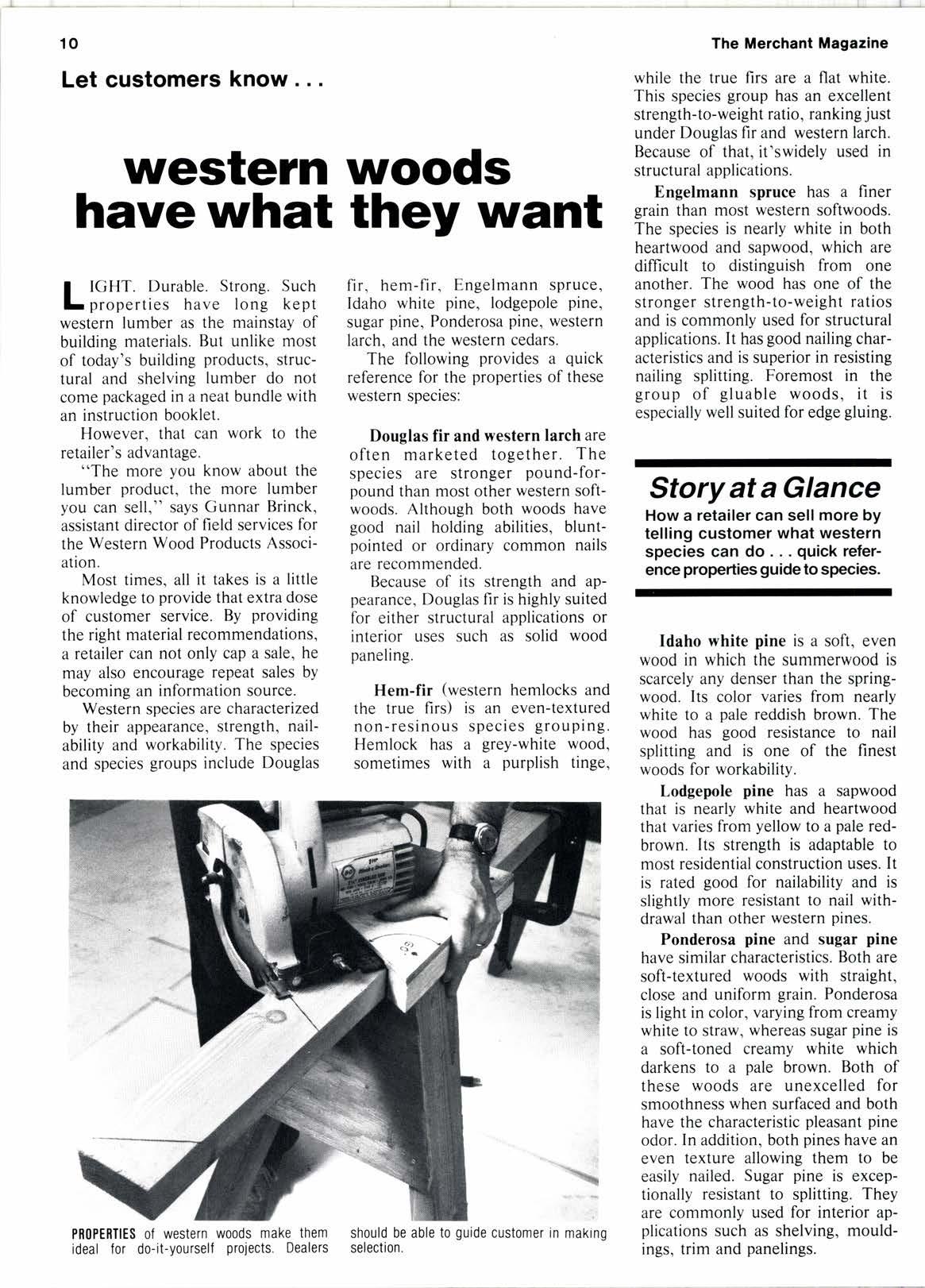
2 minute read
Let customers know western woods havewhat they want
I IGHT. Durable. Strong. Such L properties have long kept western lumber as the mainstay of building materials. But unlike most of today's building products, structural and shelving lumber do not come packaged in a neat bundle with an instruction booklet.
However, that can work to the retailer's advantage.
"The more you know about the lumber product, the more lumber you can sell," says Gunnar Brinck, assistant director of field services for the Western Wood Products Association.
Most times, all it takes is a little knowledge to provide that extra dose of customer service. By providing the right material recommendations, a retailer can not only cap a sale, he may also encourage repeat sales by becoming an information source.
Western species are characterized by their appearance, strength, nailability and workability. The species and species groups include Douglas fir, hem-fir, Engelmann spruce, Idaho white pine, lodgepole pine, sugar pine, Ponderosa pine, western larch, and the western cedars.
The following provides a quick reference for the properties of these western species:
Douglas fir and western larch are often marketed together. The species are stronger pound-forpound than most other western softwoods. Although both woods have good nail holding abilities, bluntpointed or ordinary common nails are recommended.
Because of its strength and appearance, Douglas fir is highly suited for either structural applications or interior uses such as solid wood paneling.
Hem-fir (western hemlocks and the true firs) is an even-textured non-resinous species grouping. Hemlock has a grey-white wood, sometimes with a purplish tinge, while the true firs are a flat white. This species group has an excellent strength-to-weight ratio, ranking just under Douglas fir and western larch. Because of that, it'swidely used in structural applications.
Engelmann spruce has a finer grain than most western softwoods. The species is nearly white in both heartwood and sapwood, which are difficult to distinguish from one another. The wood has one of the stronger strength-to-weight ratios and is commonly used for structural applications. It has good nailing characteristics and is superior in resisting nailing splitting. Foremost in the group of gluable woods, it is especially well suited for edge gluing.
Story at a Glance
How a retailer can sell more by telling customer what western species can do . quick reference properties guideto species.
Idaho white pine is a soft, even wood in which the summerwood is scarcely any denser than the springwood. Its color varies from nearly white to a pale reddish brown. The wood has good resistance to nail splitting and is one of the finest woods for workability.
Lodgepole pine has a sapwood that is nearly white and heartwood that varies from yellow to a pale redbrown. Its strength is adaptable to most residential construction uses. It is rated good for nailability and is slightly more resistant to nail withdrawal than other western pines.
Ponderosa pine and sugar pine have similar characteristics. Both are soft-textured woods with straight, close and uniform grain. Ponderosa is light in color, varying from creamy white to straw, whereas sugar pine is a soft-toned creamy white which darkens toa pale brown. Both of these woods are unexcelled for smoothness when surfaced and both have the characteristic pleasant pine odor. In addition, both pines have an even texture allowing them to be easily nailed. Sugar pine is exceptionally resistant to splitting. They are commonly used for interior applications such as shelving, mouldings, trim and panelings.










